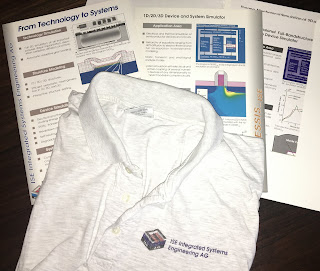Some favorite early programs I wrote
These are all pre-2000, and in chronological order:
- A 'Hunt the Wumpus' like maze adventure program on my Commodore P100 programable calculator.
- Given the max of 72 program steps and 10 memory cells of the P100, this was probably the first time I used a rudimentary hash noise function (in this case to generate the maze 'on the fly', and not need to store it).
- A primitive LISP like eval loop on my HP-41C, with symbolic derivatives and simplification.
- The integer part of the memory cells were the 'car' part, and the fractional part being the 'cdr' part (with an appropriate scaling).
- A Fortran 2d finite element solver, 'mesher' and plotter on my schools 'new' VAX/VMS.
- The only early program that I still have, as it is printed as an appendix to my 'hand typed' BS EE thesis.
- A bridge calculation:
- A two player 3d wireframe helicopter against tank simulator/shooter game (C and assembly, on my 4MHz Intel 8088 Cannon AS-100
- The screen and keyboard were split in two,. The game animated a bit more than 100 segments for both the helicopter and the tank. "Space dots" were projected in front of each 'camera' to improve the feeling of motion. Frame rate was about 4 frames per second.
- Fun fact: the 3d rotations matrix was 'compiled' in real-time to shift and add/sub instructions, as this was faster than using the CPU's multiply instructions.
- A Warnock algorithm to render only spheres on my Canon AS-100. Example, 3d triangles were many small spheres, cubes were a recursion of well placed spheres of various sizes.
- The resulting rendering where very 'organic' because of all those 'spheres' meant that everything looked 'soft',
- The 'radius testing' code was somewhat similar to the (later) doom distance calculation code, as it was one table lookup of the scaled argument, plus one fix-point iteration to refine the result.
- A scan line based design rule checker and layout 'compactor' (at the CSEM, for the analog CAD system we built)
- Initially Manhattan (orthogonal) geometries, then 45'' angles too, then any 2d geometry.
- It implemented 'boolean' and 'sizing' operators on 2d polygon geometries which my colleague Thomas Schwarz used to implement a window manager 'for fun' on the serial Tektronix color terminal. (Slow but ultra-cool effect!)
- Mentor Graphics integrated this CSEM development into their ECAD suite:
- A symbolic determinants simplifier using minimum weighted matching, used to symbolically extract dominant poles and zeros out of analog circuit sizings.
- The better algorithm came out the same year and worked on weighted matroids.
- It is this type of experience in applied math that gives you a 'bottom-up' understanding of Laplacian matrices.
- A multi-model hybrid-grid-graph simulator (as part of my PhD).
- The generic sparse matrix assembly based on priority queues meant that all sparse matrix formats and parallelization schemes were supported efficiently for very large systems (think supercomputers). As a by-product, compact models could efficiently be extracted from large grid based simulations, which ensured the simulator's and ISE AG's commercial success.
- Grid properties could be computed using Jean-Bernard Lasserre's recursive simplex volume algorithm. This generic n-dimensional algorithm was a bit slow but quite useful as many meshing systems provided incorrect volume/area/length values to the simulator for difficult mesh geometries.
- Some early ISE AG goodies (ISE was later acquired by Synopsys):
- A distributed object protocol with futures in C++ (early Actant).
- Prior to Eurex only VMS and AIX based APIs existed to quote options on Deutsche Börse. I had a good experience in serializing C++ objects to files (for my PhD). I adapted this code to make a remote object socket protocol to allow our Windows based option quoting system talk to VMS and we used this until Eurex became live (1998 I believe).
- Remote calls could be chained as a 'future protocol'. While 'cool', I later disabled the 'futures' functionality having learned that too much generality is sometimes too expensive to maintain.
- Some Actant AG goodies:



